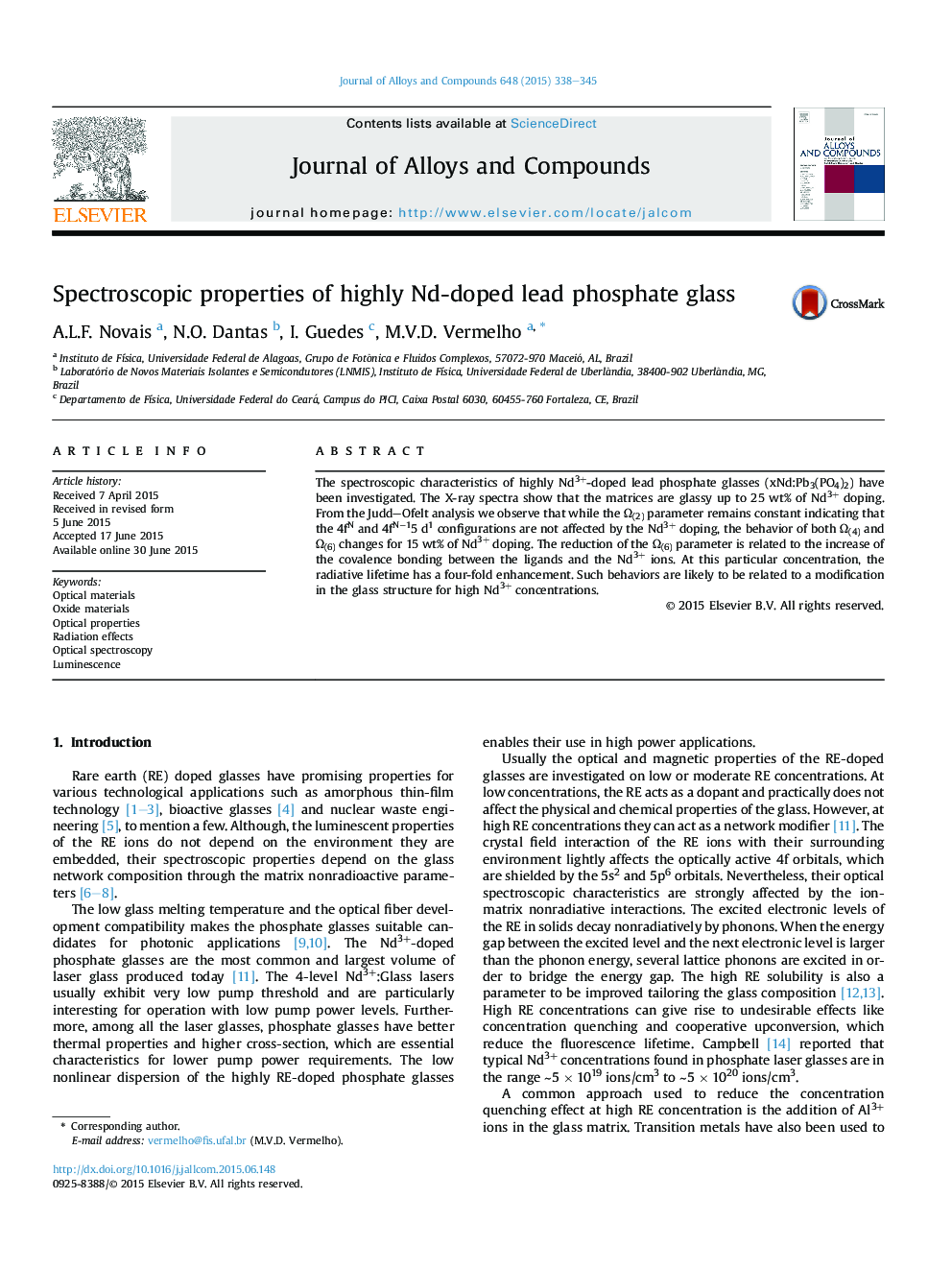| Article ID | Journal | Published Year | Pages | File Type |
|---|---|---|---|---|
| 1608509 | Journal of Alloys and Compounds | 2015 | 8 Pages |
•Spectroscopic characterization of Nd2O3 highly doped lead phosphate glasses.•Phosphate glass doped with Nd3+ for applications in photonic devices.•Judd–Ofelt analysis in phosphate glasses doped with Neodymium.
The spectroscopic characteristics of highly Nd3+-doped lead phosphate glasses (xNd:Pb3(PO4)2) have been investigated. The X-ray spectra show that the matrices are glassy up to 25 wt% of Nd3+ doping. From the Judd–Ofelt analysis we observe that while the Ω(2) parameter remains constant indicating that the 4fN and 4fN−15 d1 configurations are not affected by the Nd3+ doping, the behavior of both Ω(4) and Ω(6) changes for 15 wt% of Nd3+ doping. The reduction of the Ω(6) parameter is related to the increase of the covalence bonding between the ligands and the Nd3+ ions. At this particular concentration, the radiative lifetime has a four-fold enhancement. Such behaviors are likely to be related to a modification in the glass structure for high Nd3+ concentrations.
Graphical abstractHighly doped lead-phosphate glass matrix, with nominal concentration of up to 25 wt%, maintain the spectroscopic properties without deterioration. The analysis concerning the point of view of Nd3+ ions showed that high concentrations only affects the rare earth electronic charge density distribution.Figure optionsDownload full-size imageDownload as PowerPoint slide
